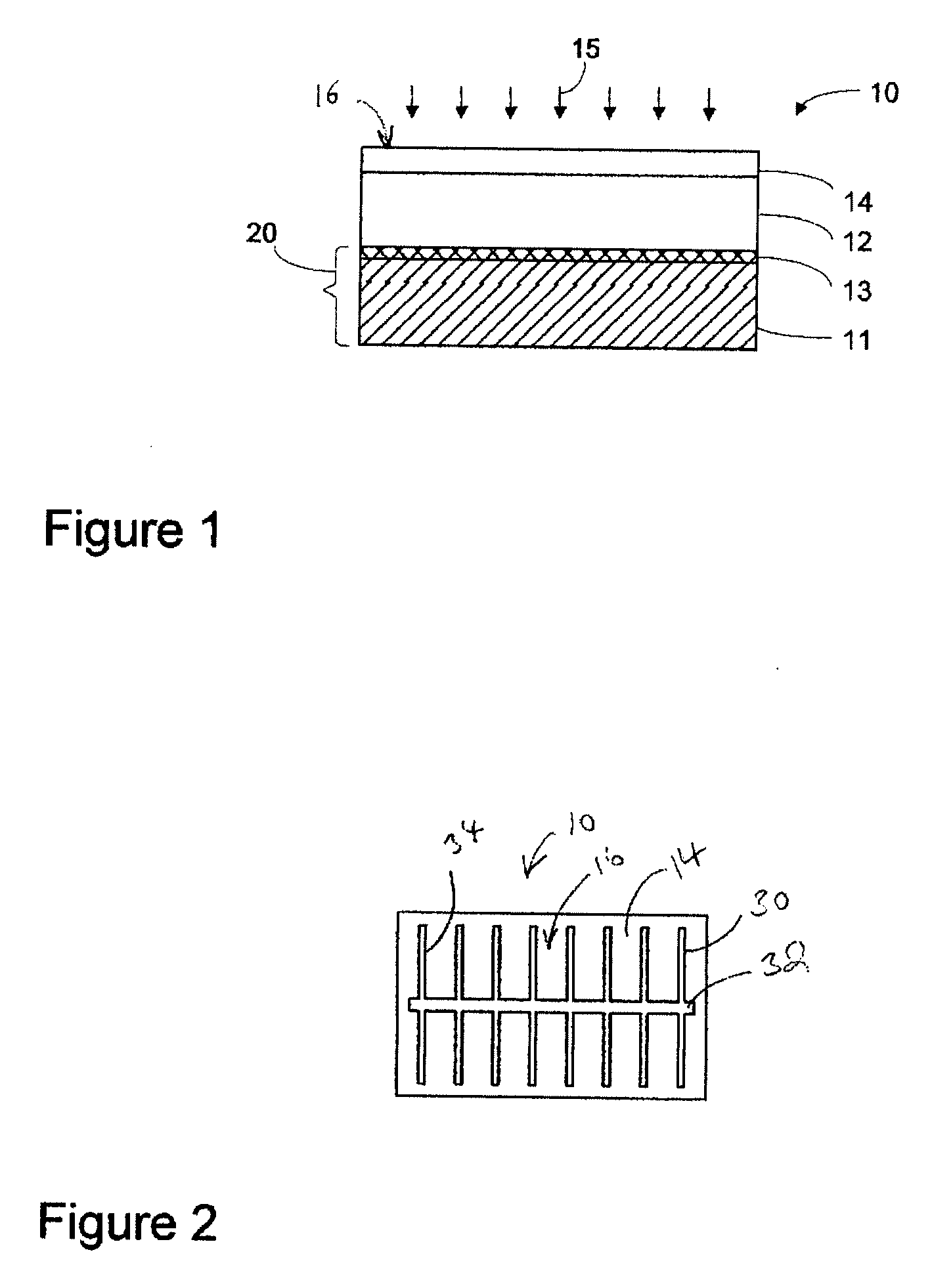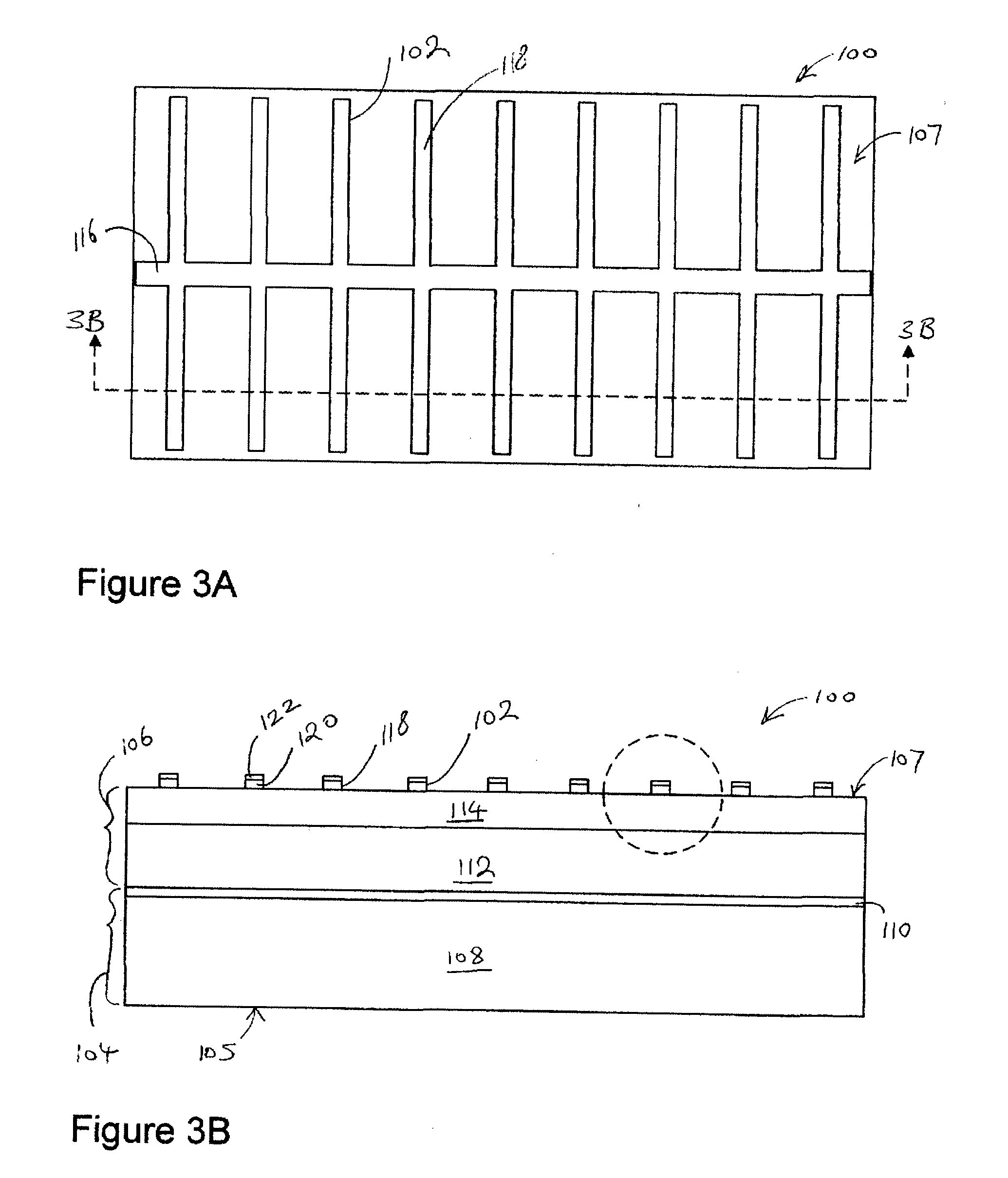Conductive grids for solar cells
- Summary
- Abstract
- Description
- Claims
- Application Information
AI Technical Summary
Benefits of technology
Problems solved by technology
Method used
Image
Examples
Embodiment Construction
[0020]The preferred embodiments provide structures of and methods for the formation of low resistivity conductive grids over illuminated side of photovoltaic cells or solar cells. In one embodiment, the conductive grid of the present invention comprises nano-tube materials, preferably highly conductive carbon nano-tubes, which have more preferably been purified in order to remove excess carbon to ensure that they are most highly conductive. During the process, a layer of the carbon nano-tube material having the pattern of the conductive grid is positioned over the top surface of a transparent conductive layer of a solar cell structure. The layer of carbon nano-tube material may be selectively deposited on a layer of conductive material which may have the same grid pattern and may be deposited on the top surface of the transparent conductive layer.
[0021]FIGS. 3A and 3B show an exemplary solar cell 100 having a conductive grid 102 in top view and side view, respectively. The solar cel...
PUM
 Login to View More
Login to View More Abstract
Description
Claims
Application Information
 Login to View More
Login to View More - R&D
- Intellectual Property
- Life Sciences
- Materials
- Tech Scout
- Unparalleled Data Quality
- Higher Quality Content
- 60% Fewer Hallucinations
Browse by: Latest US Patents, China's latest patents, Technical Efficacy Thesaurus, Application Domain, Technology Topic, Popular Technical Reports.
© 2025 PatSnap. All rights reserved.Legal|Privacy policy|Modern Slavery Act Transparency Statement|Sitemap|About US| Contact US: help@patsnap.com



